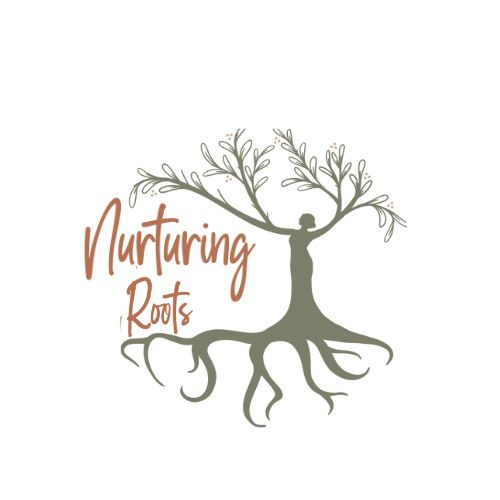5 Aromatherapy DIY Nasal Inhaler Recipes and Why to Use Essential Oil Blends This Way

Nasal inhalers are a great way to gain the therapeutic benefits essential oils offer. They are for personal use, so you don’t have to consider others around you, such as pets, small children, or your work colleague in the next cubicle. There are specific ailments that will benefit from aromatherapy nasal inhalers better than the other routes of absorption. This article will explore five aromatherapy nasal inhaler recipes and their effective essential oil blend recipes. First, let’s take a look at why to use inhalation of essential oils for therapeutic use and why it’s so favorable.
*Disclosure: I only recommend products I would use myself and all opinions expressed here are our own. As an Amazon Associate, this post may contain affiliate links that at no additional cost to you, I may earn a small commission.
THE OLFACTORY SYSTEM
Everything, including the air that you breathe, is made up of molecules. When you smell an aroma, you are smelling tiny, invisible molecules. Those molecules attach to a particular “patch” in your nose called the olfactory epithelium. This patch consists of sensory nerves that interpret the aroma and send it to the olfactory nerve, located in the front portion of our brain. This message moves so quickly that we immediately act on it and interpret what we smell; a beautiful bouquet of fresh flowers, yummy cinnamon buns, fresh-cut grass, etc. Our olfactory system is closely related to our nervous system. Furthermore, the lining of your nose and mouth is called the mucous membrane.

This membrane is much more fragile than the skin and lines most of our bodily organs. The essential oil molecules cross this lining more quickly than the skin. When entering the nasal passages, these molecules have quick access to the sinuses, throat, trachea, and lungs. These points are important when deciding what therapeutic effect you want with essential oils.
USING ESSENTIAL OILS FOR THE RESPIRATORY SYSTEM
As I mentioned, the mucous membrane lines the nose and the mouth and then extends to the sinuses, trachea, lungs, and so on. On the other side of this membrane are millions of tiny little capillaries; because the mucous membrane is so much thinner than the skin, the absorption rate of these small capillaries is much more rapid. The molecules travel quickly into the bloodstream due to the abundant capillaries present. The close connection from the nose to the respiratory system makes inhalation the best method of aromatherapy when using essential oils for allergies, cough, nasal and chest congestion, bronchial constriction, sore throats, and when defending our bodies from respiratory illness, and boosting our immunity systems.
Our respiratory system is often our first system to respond to infection. The essential oil molecules can cross the blood barrier of the lungs into the blood and travel to other areas of the body. Pure essential oils that offer respiratory support are :
This is by no means an all-inclusive list, but many of the most commonly used.
INHALING ESSENTIAL OILS AND THE EFFECT ON THE NERVOUS SYSTEM
As I mentioned, the mucous membrane lines the nose and the mouth and then extends to the sinuses, trachea, lungs, and so on. On the other side of this membrane are millions of tiny little capillaries; because the mucous membrane is so much thinner than the skin, the absorption rate of these small capillaries is much more rapid. The molecules travel quickly into the bloodstream due to the abundant capillaries present. The close connection from the nose to the respiratory system makes inhalation the best method of aromatherapy when using essential oils for allergies, cough, nasal and chest congestion, bronchial constriction, sore throats, and when defending our bodies from respiratory illness, and boosting our immunity systems.

Our respiratory system is often our first system to respond to infection. The essential oil molecules can cross the blood barrier of the lungs into the blood and travel to other areas of the body. Pure essential oils that offer respiratory support are:
- Lavender
- Clary Sage
- Jasmine
- Ylang Ylang
- Neroli or Neroli/Petitgrain
- Sweet Orange
- Bergamot Mint
- Peppermint
- Rosemary
Aromatherapy Nasal Inhaler Recipes
First, you will need inhalers. You have a couple of choices here; you can purchase reusable inhalers that you need to replace the inner wick inside every 3-4 months, or you can get one time use nasal inhalers. Either way, the blend will last a few months before it will need to be replaced.
Lastly, I like to use a small bowl or dish to get started and a pair of tweezers. I place the wick in a small bowl and drop the essential oils right on the wick. I then use the tweezers to place the wick inside the inhaler, then close the inhaler and replace the protective cover. There is a twist closure with reusable inhalers, and the one-time use has a snap mechanism that will close it off permanently. Use when needed via each nostril.
Allergy Relieving Blend
5 Drops each of:
Sinus Congestion Blend
5 drops each of:
Cough and Cold
5 drops Eucalyptus
4 drops Rosemary
3 drops Basil
2 drops tea tree
Mood Booster
4 drops Sweet Orange
Anxiety Relief
4 drops Clary Sage
4 drops Lavender
3 drops Ylang Ylang
3 drops Bergamot Mint
If you have tried these aromatherapy nasal inhaler recipes, please comment, I would love to hear about it!!

